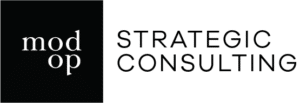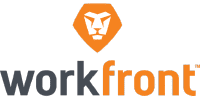In the past, demonstrating value to members was not the problem it is today for most professional societies and trade associations . Conferences and events often were the only way for professionals to connect and network with like-minded colleagues, vendors and those in adjacent fields.
Many organizations also were the only places where members could fulfill employment-critical requirements for licensing, certification or professional development. Value, in other words, was implicit and assumed.
Little of that is true anymore, due to the digital revolution.
Professionals today can far more easily find each other and collaborate using LinkedIn, Zoom, Teams and other social media and networking platforms. Nonprofit industry certification programs, once vital for employment, are under increasing threat from the rival offerings of universities and the employers themselves.
It’s little surprise, then, that in 2019 – before the pandemic – 68 percent of professional organizations surveyed reported difficulty growing their organization: 11 percent of those shrunk and 25 percent experienced no growth. The remaining 32 percent grew only 1-5 percent.
With their core value propositions disrupted, trade associations and professional societies now realize their members demand more than an annual conference, a credentialing program and a trade magazine to continue paying their membership dues and remaining loyal. Worse still, prospective members are almost certainly asking whether they have any need for what their organization has to offer. Which is why leaders of associations and societies need to ask: What do our members want, and how can we meet those needs? To reinvent member value, it’s time to go back to the basics.
What do your members value?
At Mod Op Strategic Consulting, we come to our many association and professional society clients asking some of the same questions we ask for-profit businesses . The keys to success, we’ve learned, aren’t much different between the two sectors these days. Just as a business must meet customer needs, nonprofits must figure out what their members and potential members actually crave.
It starts with a framework rooted in user-centered design known as “jobs-to-be-done.”
The idea is that customers “hire” products to accomplish tasks they need to complete, large and small. By understanding those jobs and designing your products and services to help members do them successfully, you can find greater success.
For many associations, there are actually two broad categories of “jobs” that members are likely looking for help with.
Members look to professional societies and trade associations to help them professionally.
However, they also have altruistic, mission-based reasons, such as the desire to help advance their industry’s role in improving society. Association executives should focus on how they can best meet needs on both fronts.
Ask yourself:
- Are your services providing members with things they find important, and that they can’t get with greater ease for less money or with more value somewhere else?
- Does your organization’s mission still resonate with members and prospective members, or does it need to be updated?
Where are your members and prospective members actively choosing to convene?
The tools of convening may have become commoditized, but membership organizations still hold the power to convene — in-person and virtually. After all, their members will always want an easy way to find each other, for networking and collaboration and to learn best practices and explore leading thoughts in their industries.
Our research shows that members of professional societies, in a post-pandemic world, are eager to resume in-person travel to industry conferences and events. And they still want to hear from the smartest people who can help them meet their career and mission needs.
Therefore, rather than viewing social media and collaboration tools as an existential threat, nonprofits should leverage these technologies and bolster their abilities to create and program highly informative and engaging content and experiences that meet the needs of members.
The best way to understand whether your organization is meeting the right needs is to look at where your members and potential members actually spend their time. So many organizations — nonprofit and for-profit — believe they know best but don’t actually look at how people are behaving in the wild. One of the first things we like to do with a new client is talk to their customers to understand how they interact with the organization. We also find out who else they interact with, and how.
How does this play out in real life? Discover how a 164-year-old association reinvented itself, redefined member value, and became more relevant than ever before: Read the AIA Case Study
It’s important to understand the full landscape to see what’s out there, where the gaps are and how your organization can potentially fill them. You also need to understand if what you’re doing is being done better by someone else.
How can your organization best meet member needs?
Only when you truly understand your members’ needs, and how you can best meet them, does technology come into play. Here is where your organization can leverage all the private-sector advances in digital personalization, networking and collaboration, rather than feeling threatened by them.
Specifically, organizations can leverage four types of data to meet the needs of individual members: biographical data, transactional data, implicit preferences based on their digital behaviors and preferences that they will explicitly tell you about, if asked. Together, these data points can be harnessed to improve engagement and really elevate member value.
The nature of membership also is changing.
Our own conversations with association leaders highlight the need in today’s world for more flexible member engagement.
People want more frequent, lower-commitment opportunities than they might have in generations past and clear pathways to accomplishing a range of tasks, whether involving volunteering, certification, education, mentoring or otherwise.
Putting these ideas into action
These ideas are just a start. You can’t reinvent your organization overnight. But with a deeper understanding of your members’ needs, an updated strategic plan and a move to a modern operating model, your organization can recapture the hearts and minds of your members and maintain relevance even in a changing environment.
Read more in our executive guide: How to reinvent your nonprofit for the new digital world.
Sign up for the bi-weekly dBrief email:
Explore additional executive insights and guidance from our team of consultants, all of whom have decades of operational experience making exactly the kinds of decisions you now face, or browse the library of case studies.
Client Impact Story: Marketing Automation
Discover how Mod Op Strategic Consulting helped transform a leading law firm’s ability to produce and track its digital messaging and communication.
Client Impact Story: Improving Workflow Processes
Considering robotic process automation (RPA)? Review the process we used to introduce RPA to a leading financial publisher.

















